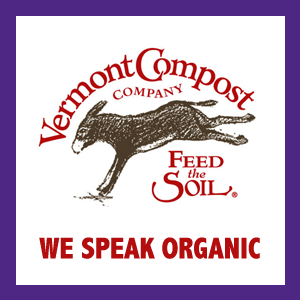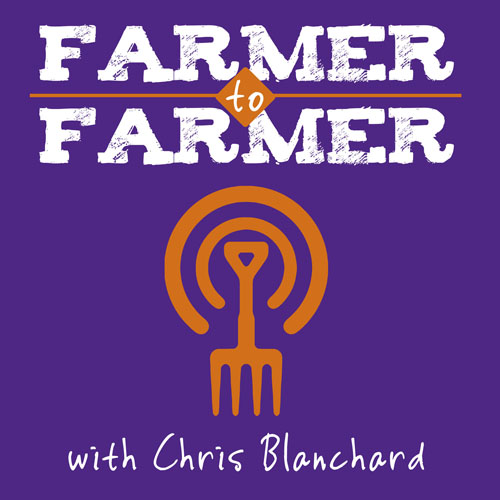Quality tends to fan out like waves. The Quality job he didn't think anyone was going to see is seen, and the person who sees it feels a little better because of it, and is likely to pass that feeling on to others, and in that way the Quality tends to keep on going. - Robert M. Pirsig, Zen and the Art of Motorcycle Maintenance.
When I took over management of Beech Hill Farm in Maine - this was almost twenty years ago now - we harvested product for sale six days each week. On Mondays, Wednesdays, and Fridays, we would harvest for same-day deliveries to stores and restaurants around Mount Desert Island; on Tuesdays, Thursdays, and Saturdays, we would harvest for sale in the farm's store, which was open those days starting in late morning.
Six days of harvest every week, and everything done in a just-in-time fashion! Having come most recently from a farm that harvested large quantities throughout each week and delivered almost everything to a distant market on Saturday, I was frustrated at the multiple harvests of small quantities of product - I knew that we were losing a huge amount of time to switching between crops.
Then we went to meet with our wholesale customers that fall, and I heard again and again that, "The quality is great, but the lettuce just doesn't last."
I decided to change things up. Instead of harvesting six days each week, we changed our harvest to three days each week - Mondays, Wednesdays, and Fridays, for delivery and sale in the store on Tuesdays, Thursdays, and Saturdays. We got some push-back from the stores, because this meant they had to place their orders a day earlier - and our lettuce in the past hadn't been lasting for two full days, so they didn’t feel confident of their ability to predict what they needed.
I was surprised at the results. I had expected some modest gains, but we discovered that harvesting ahead, and the thorough cooling that resulted before we delivered our product, meant that product lasted much, much longer than it had before once it reached our customers' shelves. As a result, our customers actually increased their orders because our product was no longer super-perishable - over-ordering wasn't the huge risk that it had been before.
Plus, harvesting ahead saved time as we batched lettuce harvest into three days instead of six, reduced stress as we weren't working under deadline to get deliveries out the same day, and improved our customer service because any shorts became apparent a full twenty-four hours before our scheduled delivery. In addition, we were able to do deliveries in the cool of the morning, when tourist traffic was at a low ebb.
When I started Rock Spring Farm in Northeast Iowa several years later, we took this lesson to heart, and invested in a walk-in cooler our first year in production - and it made a huge difference. Rather than selling produce three days each week, we sold at farmers market one day each week. Our get-it-cold-fast philosophy gave us a huge marketing advantage, since we were able to guarantee a full 10-day shelf-life for our salad mix. We would often give away salad mix to customers who had already purchased theirs from another vendor, with a promise that it would still be good to eat the night before the next farmers market.
The biggest complaint I hear about local produce is that it doesn't have the shelf-life that produce from California does, even once it arrives here in the Midwest. The University of California at Davis suggests that Romaine should have a 21-day shelf-life at proper storage temperatures - that's our competition in the quality department. The whole idea of 2,000 miles fresher doesn't mean a thing if we aren't able to provide the shelf life that our customers need to move product through the distribution chain. And it's just as important for retail customers in a CSA or at a farmers market, since a long shelf life allows customers to buy more produce, and have the time to figure out what to do with it - or even to figure out when in their crazy day-to-day lives they are going to have time to prepare it.
At a practical level, I recommend that nothing goes to market, or gets packed into a bag or a CSA box, unless it has had at least twelve hours in the walk-in cooler to reach its desired storage temperature.
When I took over management of Beech Hill Farm in Maine - this was almost twenty years ago now - we harvested product for sale six days each week. On Mondays, Wednesdays, and Fridays, we would harvest for same-day deliveries to stores and restaurants around Mount Desert Island; on Tuesdays, Thursdays, and Saturdays, we would harvest for sale in the farm's store, which was open those days starting in late morning.
Six days of harvest every week, and everything done in a just-in-time fashion! Having come most recently from a farm that harvested large quantities throughout each week and delivered almost everything to a distant market on Saturday, I was frustrated at the multiple harvests of small quantities of product - I knew that we were losing a huge amount of time to switching between crops.
Then we went to meet with our wholesale customers that fall, and I heard again and again that, "The quality is great, but the lettuce just doesn't last."
I decided to change things up. Instead of harvesting six days each week, we changed our harvest to three days each week - Mondays, Wednesdays, and Fridays, for delivery and sale in the store on Tuesdays, Thursdays, and Saturdays. We got some push-back from the stores, because this meant they had to place their orders a day earlier - and our lettuce in the past hadn't been lasting for two full days, so they didn’t feel confident of their ability to predict what they needed.
I was surprised at the results. I had expected some modest gains, but we discovered that harvesting ahead, and the thorough cooling that resulted before we delivered our product, meant that product lasted much, much longer than it had before once it reached our customers' shelves. As a result, our customers actually increased their orders because our product was no longer super-perishable - over-ordering wasn't the huge risk that it had been before.
Plus, harvesting ahead saved time as we batched lettuce harvest into three days instead of six, reduced stress as we weren't working under deadline to get deliveries out the same day, and improved our customer service because any shorts became apparent a full twenty-four hours before our scheduled delivery. In addition, we were able to do deliveries in the cool of the morning, when tourist traffic was at a low ebb.
When I started Rock Spring Farm in Northeast Iowa several years later, we took this lesson to heart, and invested in a walk-in cooler our first year in production - and it made a huge difference. Rather than selling produce three days each week, we sold at farmers market one day each week. Our get-it-cold-fast philosophy gave us a huge marketing advantage, since we were able to guarantee a full 10-day shelf-life for our salad mix. We would often give away salad mix to customers who had already purchased theirs from another vendor, with a promise that it would still be good to eat the night before the next farmers market.
The biggest complaint I hear about local produce is that it doesn't have the shelf-life that produce from California does, even once it arrives here in the Midwest. The University of California at Davis suggests that Romaine should have a 21-day shelf-life at proper storage temperatures - that's our competition in the quality department. The whole idea of 2,000 miles fresher doesn't mean a thing if we aren't able to provide the shelf life that our customers need to move product through the distribution chain. And it's just as important for retail customers in a CSA or at a farmers market, since a long shelf life allows customers to buy more produce, and have the time to figure out what to do with it - or even to figure out when in their crazy day-to-day lives they are going to have time to prepare it.
At a practical level, I recommend that nothing goes to market, or gets packed into a bag or a CSA box, unless it has had at least twelve hours in the walk-in cooler to reach its desired storage temperature.





 RSS Feed
RSS Feed
